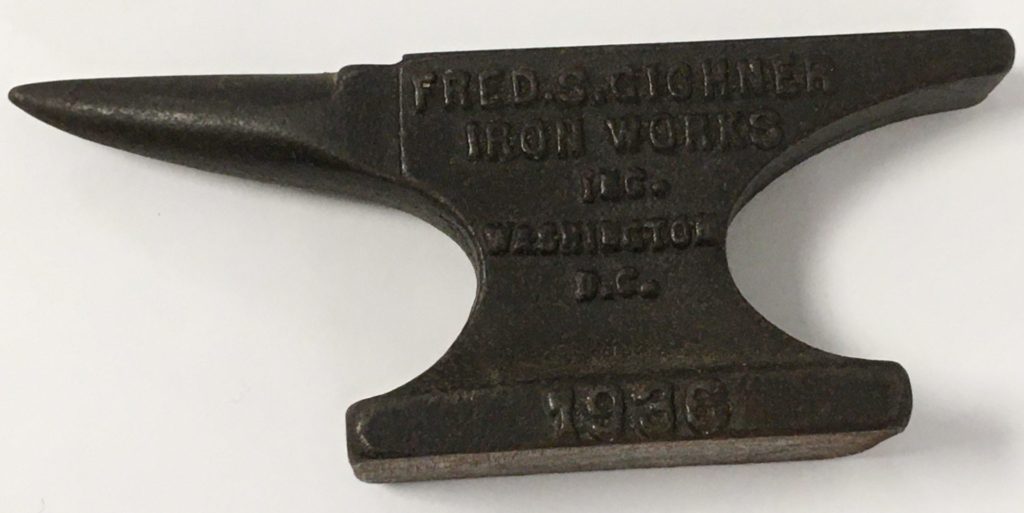The Whole Spiel
Who Remembers Gichner Ironworks?
March 16, 2020
What makes Washington D.C. — and the stories of Jewish life in the nation’s capital – unique? What kinds of surprising stories can we share to help illuminate the past and bring the rich stories of our community to life?
That’s a question we’re continually exploring while we collect the objects and stories we will showcase in the new museum.

Anvil, CJM Collections
Consider the stories built into this miniature anvil from the Fred S. Gichner Ironworks, given to us just last week by our longtime friend Carolyn Gichner.
Austrian immigrant Fred Gichner opened his one-person shop at 12th & E Streets in 1899. After advertising his business by drawing designs on the sidewalk, he soon brought in his first customer – the Willard Hotel.
With little other competition nearby, Gichner Ironworks quickly expanded to 70 people and built a large plant at 24th & M Streets. Specializing in ornamental ironwork filled with beautiful curlicues and sprays, Gichner Ironworks helped beautify the capital city with their fences, gates, and railings adorning several embassies, the Smithsonian, National Cathedral, and even the White House.

Award, CJM Collections
In an oral history we conducted with Henry Gichner in the 1980s, he recounted how he used his proximity to power to become a major supplier for the war effort in the 1940s: I would get into the munitions or the Navy building and knock on doors and ask, “What do you need? They said to me, “Where have you been? We need you. We need rocket launchers. We need this. We need that. I said “I can make it. The Ironworks quickly began production of wartime supplies and even won an award (at right) in 1943 for their “exceptional efficiency and production.”

Fence, CJM Collections
After Fred Gichner died, his son Henry took over the company and eventually moved the ironworks out of the city in 1965. Soon after, Gichner Ironworks put its mark on our historic 1876 synagogue. Following the synagogue’s move in 1969, Henry Gichner created this fence, modeled after a hand-wrought iron railing in a synagogue balcony on the isle of Rhodes. The fence surrounded the synagogue at its second home at 3rd & G Streets for the next 40 years, until the synagogue made its final move down the street to our new museum site.
Our Gichner Ironworks fence is now in storage with the rest of our collections, awaiting the opening of our new museum and restoration of the synagogue. What surprising story or object would you like to see in the museum? Let us hear from you!
Author: Wendy Turman / March 2020
